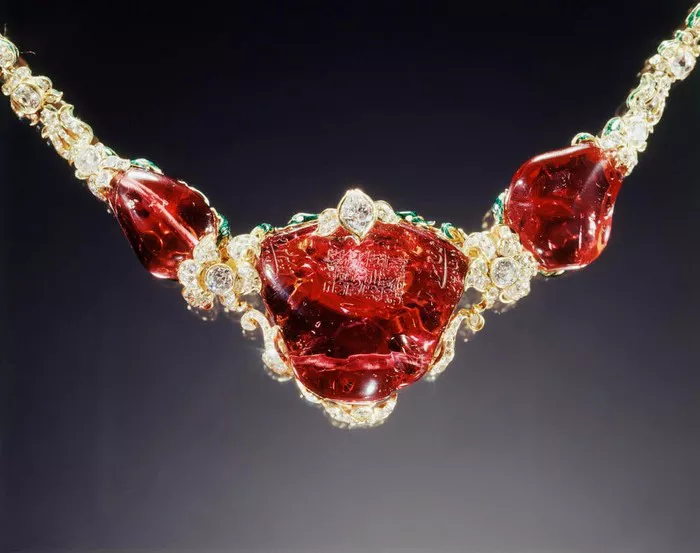Rubies have long been cherished for their intense red color and historical significance. These precious gemstones are not only valued for their beauty but also for their rarity and symbolism. Among the various factors that determine the value of a ruby, its carat weight plays a crucial role. In this comprehensive guide, we will delve into the world of 10-carat rubies and explore the factors that influence their worth.
Understanding the Rarity and Appeal of Rubies
Rubies are a variety of the mineral corundum, with their distinctive red color caused by the presence of chromium. Throughout history, rubies have been associated with royalty, passion, and protection. Their rich color and symbolism have made them highly sought after in jewelry, especially in engagement rings and other statement pieces.
The value of a ruby is determined by the “Four Cs”: Color, Clarity, Cut, and Carat weight. Among these, carat weight often captures immediate attention, as it indicates the size of the gemstone. A 10-carat ruby is a significant stone that commands attention due to its size alone. However, other factors come into play when assessing its value.
See Also: What Is a Mahaleo Ruby: The Mystique of Madagascar’s Gem
1. Carat Weight and Its Impact on Ruby Value
Carat weight is a measure of a gemstone’s mass, with one carat equivalent to 200 milligrams. While larger gemstones are generally more valuable, the relationship between carat weight and value is not always linear. This is particularly true for rubies, where other factors can influence the price significantly.
2. Color: The Prime Determinant
The color of a ruby is arguably the most critical factor influencing its value. The finest rubies exhibit a vivid, pure red color often referred to as “pigeon’s blood.” Stones with this color are incredibly rare and can command astronomical prices, regardless of their carat weight. As the carat weight increases, finding rubies with exceptional color becomes even rarer, thus exponentially increasing their value.
3. Clarity and Cut: Refining the Gem
Clarity refers to the presence of internal flaws, known as inclusions, and external blemishes. While rubies are not as commonly known for their clarity as diamonds, it still plays a role in determining their value. A clean, well-cut 10-carat ruby will be more valuable than one with visible inclusions or a poor cut that diminishes its brilliance.
4. Market Demand and Rarity
Beyond the traditional Four Cs, market demand and rarity also significantly influence a ruby’s value. The availability of high-quality, 10-carat rubies is limited, contributing to their higher price. Collectors and investors often seek out large rubies with exceptional characteristics, driving up the demand and subsequently, the value.
5. The Role of Treatments
It’s essential to consider any treatments a ruby may have undergone. Heat treatment is a common practice in the gemstone industry to enhance color and clarity. While heat-treated rubies can still be valuable, their value is generally lower compared to untreated stones of similar quality. Other treatments, such as fracture filling, can impact a ruby’s value negatively.
A Comparative Analysis: 10-Carat Ruby vs. Other Gemstones
To put the value of a 10-carat ruby into perspective, it’s helpful to compare it with other gemstones. For instance, a 10-carat diamond will likely be more expensive due to the high demand for diamonds and the perception of diamonds as status symbols. However, a 10-carat ruby may surpass the value of other colored gemstones due to its rarity, intense color, and historical significance.
Case Study: Record-Breaking Ruby Auctions
Auction houses have seen some remarkable prices for large rubies in recent years. In 2015, the “Sunrise Ruby,” a 25.59-carat Burmese ruby, sold for over $30 million, setting a new world record for the most expensive ruby ever sold at auction. While this example is not directly related to 10-carat rubies, it highlights the incredible value that exceptional rubies can command.
In Conclusion
The value of a 10-carat ruby is influenced by a combination of factors, with color, clarity, cut, market demand, and treatments all playing significant roles. The rarity and intense color of rubies, coupled with their historical significance, contribute to their allure and high value. While larger rubies are generally more valuable, the presence of exceptional qualities can elevate a ruby’s worth significantly.
As with any precious gemstone, it’s crucial to conduct thorough research, seek expert advice, and obtain proper certification and appraisal before making any significant transactions involving 10-carat rubies. By understanding the intricacies that contribute to a ruby’s value, both buyers and sellers can navigate the market more confidently and make informed decisions.


